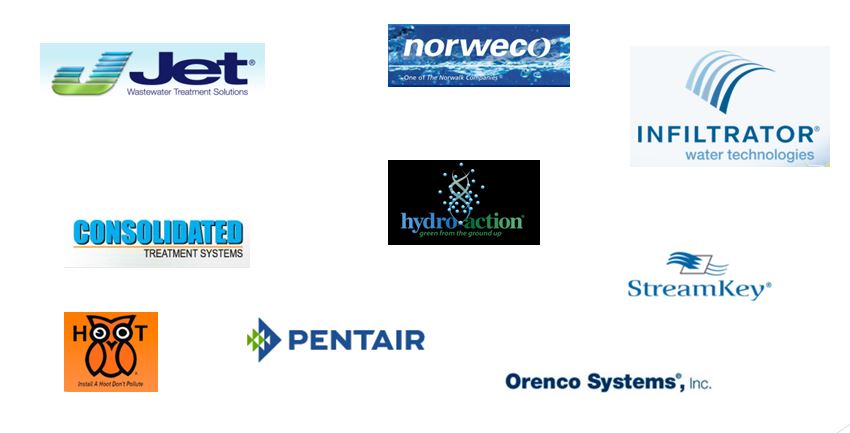Septic systems all have the common requirement, regardless of type, all septic systems have to distribute lots of water. All water generated in the home must be either treated and discharged off of the property or distributed into the soil on the property.
Discharging systems are a last resort in modern times. There are certainly a lot of advanced treatment options with discharging systems, but often regulations require systems to treat and dispose the wastewater completely on the property.
There are many manufacturers of discharging systems, and new products showing up all the time. All modern discharging systems require advanced treatment. The advanced treatment units all utilize aeration or filtration and some disinfection to process the wastewater before discharging the water into a natural body of water, storm sewer, or land area.

Primay Treatment
Primary treatment in septic systems is the part of the process where the solid materials are settled out and stored. Septic system primary treatment basically means a septic tank, or septic compartment of an aeration tank, commonly called a trash trap.
Some pretreatment units require the purchase of a stand alone septic tank and some contain a built in trash compartment into the septic pretreatment system.
Secondary Treatment
Secondary treatment in septic systems is when the water after the primary treatment, or commonly termed effluent, is further treated. Aeration systems work by introducing air and attempting to produce bacterial growth. That's right, bacteria are encouraged to grow. A certain type of bacteria growth is ideal and these bacteria then grow consuming wastes, and clump together, falling becoming heavy and falling down in the bottom of the tank.